Jack Dempsey
The
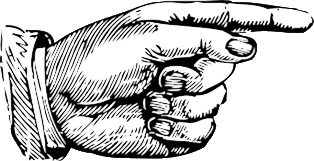 Manassa
Manassa
Mauler
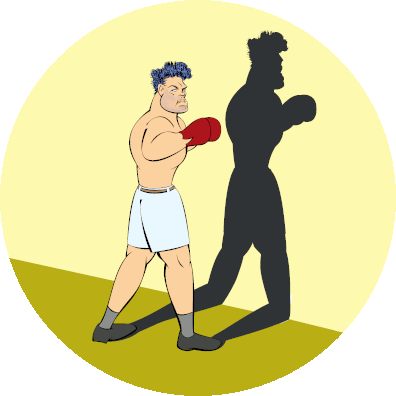
(Click to Zoom In and Out)
|
"Dempsey's too damn small to take Willard," Kelly said. |
|
- |
James T. Farrell |
For once, the protagonist of James T. Farrell's most famous novel got it right1. Jack Dempsey was smaller than Jess Willard and he did "trim" the big guy. On July 4, 1919, the two men fought it out in Toledo, Ohio, before a crowd of nearly 20,000 with the temperature reportedly hitting 110 degrees.
Footnote
In the 1930's and up to the 70's James T. Farrell was considered one of the most important of America's "naturalistic" novelists. Now largely forgotten, his claim to his former fame was the writing of the Studs Lonigan Trilogy: Young Lonigan (1932), The Young Manhood of Studs Lonigan (1934), and Judgement Day (1935), all set in an Irish-American neighborhood in early 20th century Chicago.
The books were released in a single volume in 1935 titled Studs Lonigan and in 1938, Random House issued an edition as part of its Modern Library. So by the time he was 35, Jim was considered an author worthy to stand with the likes of Edgar Allan Poe, Herman Melville, Nathaniel Hawthorne, Walt Whitman, and (of course) Mark Twain. Studs Lonigan was lauded by the likes of John Steinbeck, Bruce Catton, and Norman Mailer. Ed Ricketts, the biologist philosopher who was originally from Chicago, praised the book's accuracy.
In 1960 Studs Lonigan was made into a rather loose movie adaptation where Studs's rival in the 58th Street Gang, Weary Reilly, was played by a newcomer named Jack Nicholson. Then in 1979, the trilogy landed on network television as a miniseries - the height of fame for the work of any author. The first episode was aired on March 7 and the remaining two shows were broadcast in the following two weeks.
Jim died five months later age 75, and almost immediately fell from the literary radar screen. A few years after the mini-series was aired, a former educational network broadcast a panel discussion on American literature. One listener called in and asked the panel their opinion of the works of James T. Farrell. None of the panel - composed of English and literature professors from major universities - had even heard of him or Studs Lonigan.
Jess was the star and was offered $100,000 whether he won or lost. Jack, just coming into the national consciousness, only received $27,500 which seems rather chintzy since the odds were only 5:4 for Jess.
The surprisingly clear films of the fight are still extant and it is a bit strange to see how small Jack looked. Contemporary accounts listed Jack weighing in at a mere 187 pounds compared to Jess's hefty 243 (that's a 56 pound difference for those without a calculator). But neither man had the physique of today's highly conditioned thickly muscled pugilists. Jack, in fact looks quite slim and slight.
Jess had never been knocked down in a professional fight but Jack sent him to the canvas seven times in the first round. In fact with his seventh knock-down Jack thought Jess had been counted out. He left the ring and then the referee pointed out the fight wasn't over - the bell had rung before the 10 count. Jack's manager, John McKernon (better known as Doc Kearns ), had to yell to Jack to get back into the ring. The fight kept going for a total of three rounds until Jess's manager threw in the towel at the beginning of the fourth.
Virtually all accounts report that Jess had fractured his jaw, broke his cheek, cracked his ribs, and lost some teeth. However, Jess himself said that although he had a bad cut on his brow and was cut on the mouth, he was not seriously injured. However, years later he spoke about how Jack had "caved in his face". No one disputes that Jess was thoroughly beaten.
Ironically it was this tough fight that brought boxing to the realm of respectability. Soon rich and poor, men and women, were swarming to the fights. The matches at Madison Square Garden became a national institution.
Later Doc Kearns claimed he had loaded Jack's gloves with plaster of Paris. Or rather the bandages that were used to wrap Jack's hands had been impregnated with plaster of Paris and soaked in water.
Doc's account was printed in a popular sports magazine shortly after he died in 1963. We can't say that Doc was telling the story from Olympian detachment. For various reasons Jack had acrimoniously split with Doc about the time Jack married actress Estelle Taylor. Some accounts say Doc didn't want Jack to hang around with Estelle, much less marry her, and that's the reason for the disagreement.
In any case, the story of Doc loading the gloves doesn't make sense. Solidified plaster on the bandages would have broken Jack's hands long before Jess's face. More amazingly, Doc claimed that Jack - a "young fighter" - didn't know enough to recognize his bandages had been loaded. But Jack was not that young a fighter - he was twenty-four - and had been boxing professionally for eight years. He had been in over 60 bouts before he took on Jess.
And besides when a crooked fighter (or his associates) switch gloves, they sneak in lighter gloves, not heavier ones. That allows for faster and harder punches and still protects the boxers hands. Ultimately the magazine disavowed the story and the claim was omitted when Doc's memoirs were printed in book form.
William Harrison Dempsey was born in Manassa, Colorado, in 1895. That's Manassa,Colorado, not Manassas, Virginia. Jack was a Westerner, not a Southerner.
One of eleven children in a Mormon family, Jack left home at age 16. He hoboed around, worked as a ranch hand and miner (both jobs which he said he liked) and would engage in boxing bouts in the towns he found himself in. Usually the winner would get a small purse - sometimes a dollar or two - and soon Jack was making most of his money in the ring.
Not unexpectedly given the time and place, Jack's itinerary is a bit difficult to trace. We do know that by 1911 Jack had more or less turned professional and was managed by a gentleman named Hardy Downey. Jack - then known as "Kid Blackie" - usually won. The story is that when Jack once knocked out an opponent in one punch, Hardy was ticked because the fight was so brief he made Jack fight a second bout before he was paid.
Soon Jack headed to New York. As hard as it is to believe, boxing was prohibited in most states and New York was one where it was legal.
After Jack beat Jess and became heavyweight champion, his fights were far more sporadic. In 1918, Jack fought 21 times - far in excess of what a professional boxer would do today. In 1919, his only bout was with Jess, and he didn't fight again until September 1920. But he also fought that December.
In 1921 there was the "Million Dollar Gate" matchup with the French boxer Georges Carpentier. Jack knocked Georges out in the 10th.
Jack didn't enter the ring again until 1923 when he contended with Tommy Gibbons. It was just two months later in September that Jack had his famous bout with Luis Angel Firpo. In this fight a punch from Luis sent Jack out of the ring and onto the press table. Jack, though, climbed back in and went on to win the fight, again by a knockout2.
Footnote
There's some question whether the reporters helped Jack back into the ring or not.
During the next three years Jack didn't fight at all, and he lost his title on September 23, 1926, to Gene Tunney (who later gave a lecture on Shakespeare at Harvard). People - and even Jack - suspected he was finished with the fight game. But then he knocked out Jack Sharkey a year later. That led to the rematch with Gene and the famous "Long Count".
Despite what some think, the rule that a fighter has to go into a neutral corner after a knock-down was not created in response to Jack's tendency to start pounding a downed opponent once both knees were up off the canvas - although Jack didn't hesitate to do this. Instead it was Jack and his managers who asked for the rule and specifically for the re-match with Gene.
Gene, as everyone knows, went down in the 7th round. Jack, forgetting the new rule, stood around for five seconds until the referee got him to go to the neutral corner. Gene got up on the count of nine (ergo, fourteen) and went on to win the fight.
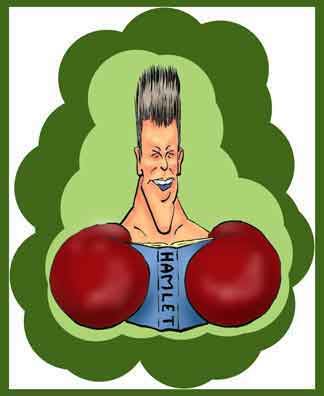
Gene Tunney
He went on to win.
And the big question remains: Could Gene have gotten up without the extra seconds and still have won?
Looking at the film, people see what they want to see. If you think Gene could not have gotten up, you'll see him looking dazed and befuddled as he sits on the canvas. But if you think he could have managed a real nine-count - after all, he did get up just in time - it must have been that his mind was clear and alert. So he would have won in any case.

A Famous Talk Show Host
Fifty years later Gene was asked by a famous talk show host asked if he could have gotten up. Jack, who was also present, interrupted and, said yes, Gene could have gotten up and would have gone on to win the fight. So we conclude Jack must have been a nice guy.
In the 1920's there were only three professional sports of any note. These were baseball, boxing, and horse racing. Although baseball was the national pastime, boxing was generally in at #2.
But of course there were other games in town and the Big Five of Sports of the Roaring Decade were Babe Ruth (baseball), Red Grange (football), Bill Tilden (tennis), Bobby Jones (golf), and of course, Jack. It may seem odd that there were no jockeys lumped in to make a Big Six. But the real stars of the tracks were the horses not the people. In the 1920's the most noted racehorse was Man-O'War.
The perpetuality of the heavyweight champions as top-flight celebrities began its rapid decline after the third championship reign of Muhammad Ali. That was in 1980. Before then every Joe and Josephine Blow on the streets knew who the heavyweight champion was. Within ten years they'd been hard pressed to say if there was still boxing.
Scholars have advanced a number of reasons why the sweet science has fallen to near invisibility. With the advent of television came the onslaught of other pro-sports - football, basketball, and even hockey. With their multiple matchups in a season, the allotment of time would muscle out the sport where an athlete might fight only two to three times a year. More and more matches were booked on pay-per-view television which may have kept revenues up but also reduced the audience. Boxing is also one of the most difficult sports for the uninitiated to follow. Unlike sports where the scores are easily toted up by counting touchdowns, adding up runs, and tallying baskets, in the ring it looks like two guys dancing around and missing punches. A lot of time you can't tell whose winning unless there's a knockout.
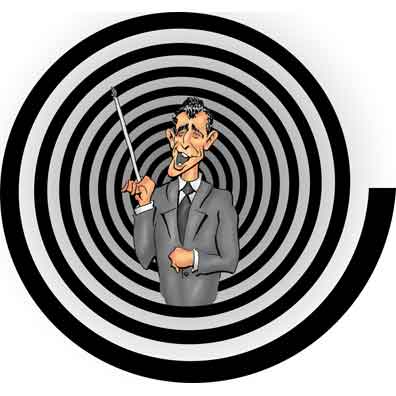
Rod Serling
He predicted it would be banned.
And that brings up another point. In the introduction to a 1963 episode of the Twilight Zone Rod Serling predicted boxing would be banned in 1968. Obviously that didn't happen, but from time to time medical organizations have called for the sport to end3.
Footnote
The writer of the episode - like many science fiction authors when "predicting the future" - got a lot of things wrong besides the demise of boxing. For instance we see that in 1974 there are human looking robots that can box, and yet automobiles, hair styles, and clothing remain late '50's or early '60's. Men still wear fedoras and are clean shaven with scarcely a leisure suit, Beatle haircut, beard, or mustache to be seen.
Boxing, the critics point out, is one sport where the actual goal is to deliberately inflict harm on the opponent. Blows to the head are a principle part of a boxer's technique, and a perfectly legal, noteworthy, and even praised outcome - the knock-out - is from physical trauma that can cause permanent brain damage. Use of gloves or helmets has not reduced the severity of the injuries, and one critic pointed out the irony that boxing prohibits punches to what Pliny the Younger called "the parts that are held in reverence", but extends no such protection to the brain. After one particularly brutal bout, one of the most well-known (if not well-liked) boxing commentators said he would no longer announce the sport.
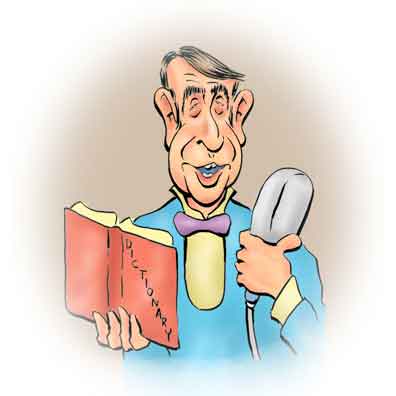
No longer announcing the sport.
Boxing advocates, though, pooh-pooh such objections as the lowing of the herd of the bleeding heart liberals. They point out that most bouts do not end in a knockout and that skilled boxers win on points and by decision awarded by skilled and objective judges. And to this day boxing remains one profession where the skilled participants can achieve wealth and fame without being - and usually are not - the progeny of wealth and privilege.
Morgan faced Studs with hands out in the classical boxing stance. Studs thought of himself a little like he imagined Jack Dempsey would be when going into the ring. He circled and swayed, pulled two feints, frowned for effect, set himself to let go with a left, and was stabbed in the jaw by a left jab.
Jack made a bundle and unlike many other boxers of his era, he was able to retire to affluence. In 1935, he opened a restaurant on Broadway in New York City. Commonsensically named "Jack Dempsey's Broadway Restaurant", it remained open for almost 40 years, not closing until 1974. Jack didn't throw in the towel for another nine years, in 1983, aged 87.
References
Jack Dempsey: The Manassa Mauler, Randy Roberts, University of Illinois Press, 2003.
"Jack Dempsey", BoxRec.
"Jess Willard vs. Jack Dempsey", BoxRec.
"World's Boxing Championship is Won by Dempsey in Three Fast and Furious Rounds, Cordova [Alaska] Daily Times, July 5, 1919, Chronicling America, Library of Congress.
"Jack Dempsey vs. Jess Willard at 100: Looking Back at One of Boxing's Landmark Fights", Thomas Hauser, Sporting News, July 4, 2019.
"Boxing: Breaking Down the Steady Decline of the Sweet Science", Steve Silverman, Bleecher Reports, October 13, 2012.
"The Law(s) of the Rings: Boxing and the Law", R. G. Beran and J. R. Beran, Journal of Law and Medicine, Vol. 16, Issue 4, pp. 684 - 95, March 2009.
Kings of the Ring: Four Legends of Heavyweight Boxing, Cappy Productions, 2000, Internet Movie Data Base.
"Doc Kearns's Last Dirty Trick", American Heritage, Vol. 28, Issue 3, April 1977.
"Gloves Loaded? Dempsey says No; Willard Supports Charges Made by Kearns", The New York Times, January 9, 1964.
The Odds Against Me, John Scarne, Simon and Schuster, 1966.
"The Destruction Of A Giant: How I Beat Jess Willard", Barbara Piattelli Dempsey, American Heritage, Vol. 28, Issue 3, April 1977.
The Legendary Champions: 1882-1929, The Big Fights Inc., 1968.
Studs Lonigan, James T. Farrell, Modern Library, 1938.
"About Ed Ricketts", John Steinbeck, The Log from the Sea of Cortez, Viking Press, 1969.
"Times Books", Bruce Catton, The Indianapolis Times, November 23, 1935.
"James T. Farrell: "My Past is Considered Better Than My Future", Roger Ebert, September 15, 1968, Robert Ebert Interviews.
"Steel", Lee Marvin (actor), Joe Mantell (actor), Rod Serling (narrator), Don Weis (director), Curtis Kenyon (script), Richard Matheson (script and story), The Twilight Zone, CBS, 1963, Internet Movie Data Base.
"Jack Dempsey KO's Jess Willard", MoselyBoxing.